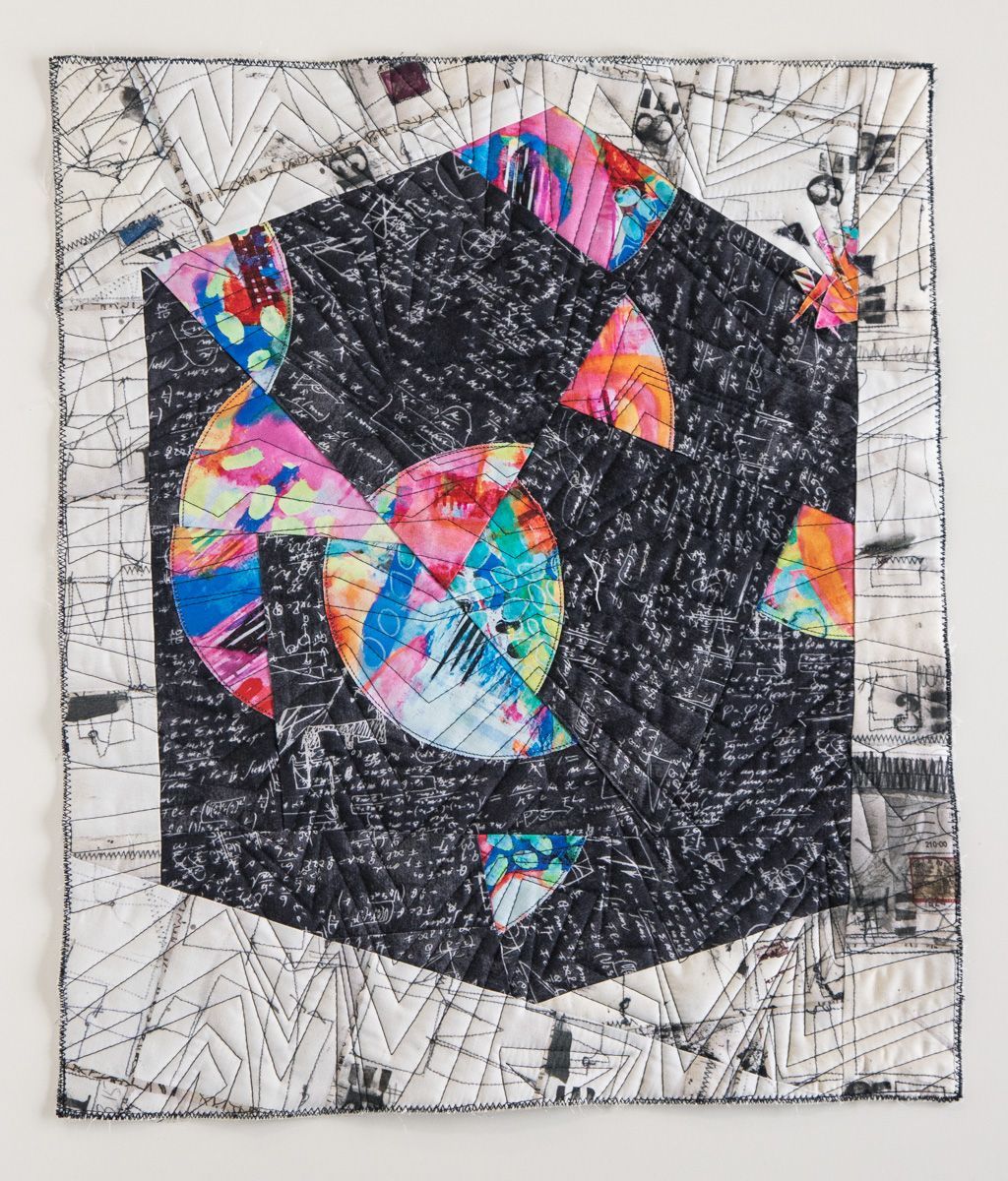Schizophrenia (a type of Psychosis)

17x21in, quilter’s cotton (machine-pieced and quilted), created in 2023, NFS
This quilt is meant to represent schizophrenia. This quilt is meant to represent the internal versus external experience of this diagnosis. People experiencing symptoms of psychosis may appear very disorganized, frantic behaviors, and expressing very black/white or outlandish thinking. Internally the experience is often rich with delusional thoughts, visions, and paranoia that increase anxiety and erratic behavior. In many ways, schizophrenia specifically can shatter one's sense of self and the ability to trust that anything happening is real.
What to look for: The colored shards were once a symbolic round plate, demonstrating the uniqueness and wholeness of a person as they are. The “breaking of the plate” is a representation of the onset of psychosis (here, schizophrenia) and the appearance of brokenness that others don’t know how to respond to. The quilting is meant to represent the emotional response of the person as well as others. If you or someone you know is living with symptoms of schizophrenia, please know that a person is not their diagnosis. A diagnosis is a lived experience of symptoms that are negatively impacting a person’s ability to function “normally” in the world.
Book recommendation(s): These books are not meant to replace medical intervention and/or skilled therapy.
The Center Cannot Hold: My Journey Through Madness.
https://a.co/d/cRIpPVb
I Am Not Sick, I Don’t Need Help! How to Help Someone Accept Treatment
https://a.co/d/23IboKE
From NIMH (National Institute for Mental Health):
Schizophrenia is a serious mental illness that affects how a person thinks, feels, and behaves. People with schizophrenia may seem like they have lost touch with reality, which can be distressing for them and for their family and friends. The symptoms of schizophrenia can make it difficult to participate in usual, everyday activities, but effective treatments are available. Many people who receive treatment can engage in school or work, achieve independence, and enjoy personal relationships.
Some things you may notice or experience include:
+ Positive symptoms such as hallucinations (sees, hears, smells, tastes, or feels things that are not actually there), delusions (strong irrational beliefs), unusual or illogical thinking/speech, abnormal motor function (body movements),
+ Negative symptoms such as difficulty concentrating/focusing, loss of motivation, loss of interest or enjoyment in daily activities, withdrawal from social life, difficulty showing emotions, and difficulty functioning normally.
Resources:
A scary truth regarding Schizophrenia is that one of the symptoms of the diagnosis is often anosognosia (an inability to recognize one is sick/ill). This is not to be confused with denial. There is a fantastic book out there on this topic and NAMI provides an excerpt of it HERE. It's titled "I am not sick, I don't need help." Anosognosia explanation starts at page 21.
There's also a lovely lady out in the world whom is an attorney and self-professed her diagnosis of schizophrenia, and you can see her speak
HERE. Her name is Elyn Saks and she has also authored the book "The Center Cannot Hold: My Journey Through Madness" which you can learn more about
HERE.
Learn more about this diagnosis at the National Institute for Mental Health.
Click here to learn more about psychosis in general.
